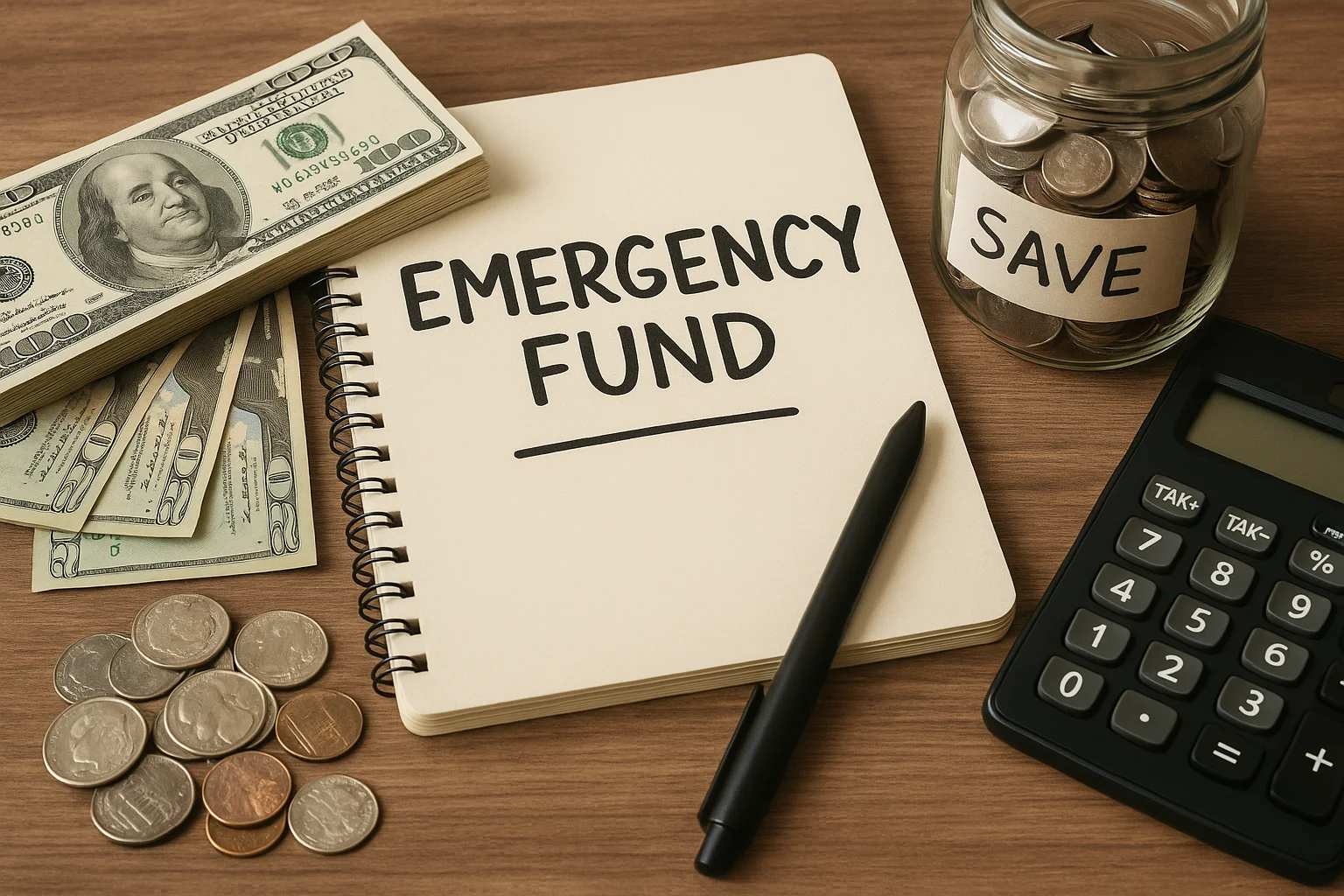An emergency fund is your financial safety net — a cash reserve set aside for unexpected expenses like medical bills, car repairs, or job loss. Without one, even a small surprise cost can derail your budget or push you into debt. Whether you’re starting with $0 or already have some savings, this guide will help you build a solid emergency fund step by step.
What Is an Emergency Fund?
An emergency fund is money specifically set aside to cover unplanned, urgent expenses. It is not meant for planned purchases, vacations, or investments. Its sole purpose is to protect your finances when life happens.
Why You Need One
Here’s why every person — regardless of age or income — should have an emergency fund:
- Avoids credit card debt in emergencies
- Reduces financial stress when something goes wrong
- Gives you flexibility during tough times
- Helps you stay on track with your financial goals
It’s not about if an emergency will happen — it’s when.
How Much Should You Save?
Short-Term Goal:
Start with $500 to $1,000. This small cushion can cover most minor emergencies like a car repair or medical copay.
Long-Term Goal:
Aim for 3 to 6 months of essential living expenses. This includes:
- Rent/mortgage
- Utilities
- Groceries
- Transportation
- Insurance
Example: If your monthly expenses are $2,000, your target emergency fund should be $6,000 to $12,000.
Step 1: Set a Realistic Goal
Start by deciding how much you want to save in the short term. For example:
- $1,000 in 4 months = $250/month
- $500 in 10 weeks = $50/week
Having a clear number helps you stay focused and motivated.
Step 2: Open a Separate Savings Account
Keep your emergency fund in a different account from your daily checking or regular savings. Choose:
- A high-yield savings account
- An online bank account (often offers higher interest)
- Any account with no fees and easy access
Avoid investing your emergency fund in stocks or volatile assets. You want it to be safe and accessible.
Step 3: Treat Savings Like a Bill
Automate your savings just like any other recurring payment.
- Set up an automatic transfer on payday
- Use banking apps with “autosave” features
- Try round-up apps that save spare change from purchases
Even $10 a week adds up to over $500 a year.
Step 4: Reduce Non-Essential Spending
To build your fund faster, identify areas to cut or pause spending.
Ideas include:
- Canceling unused subscriptions
- Cooking at home more often
- Delaying large purchases
- Using coupons and discount apps
Put every dollar saved directly into your emergency fund.
Step 5: Boost Your Income (If Possible)
Sometimes cutting costs isn’t enough. Consider temporary ways to earn extra cash:
- Freelancing or remote gigs
- Selling unused items online
- Tutoring or pet sitting
- Participating in paid surveys
Any side income can go straight to your emergency savings.
Step 6: Save Unexpected Windfalls
Use bonuses, tax refunds, gifts, or rebates wisely. Instead of spending, allocate all or part of the money to your emergency fund.
Example:
- Tax refund of $800? Save at least $400.
- Birthday cash of $100? Save $50.
These “extra” funds can speed up your progress without affecting your regular budget.
Step 7: Don’t Dip Into It (Unless It’s Really an Emergency)
Common emergency expenses:
- Medical bills
- Car breakdowns
- Job loss
- Emergency travel
- Home repairs (e.g., broken water heater)
Not emergencies:
- Shopping deals
- Concert tickets
- Upgrading your phone
- Gifts
Use strict judgment before withdrawing money.
Step 8: Refill It When Used
If you ever use your emergency fund, make it a priority to refill it. Rebuild the safety net as quickly as you can — emergencies can happen more than once.
Create a repayment plan just like you did when building it the first time.
Step 9: Celebrate Small Wins
Saving money takes discipline. Celebrate milestones like:
- Saving your first $100
- Reaching the halfway mark
- Hitting your target
Small wins build momentum and make the journey rewarding.
Long-Term Maintenance
Once you reach your goal:
- Keep it untouched unless needed
- Review your target once a year (adjust if expenses change)
- Continue contributing small amounts over time
If you never use it — that’s a win. It means you’re prepared and lucky. But if you do need it, you’ll be incredibly thankful it’s there.
A Safety Net You Can Count On
An emergency fund is more than just money in the bank — it’s peace of mind. It gives you confidence to face life’s surprises without fear or financial panic. The best part? You can start today, even with just a few dollars.
Remember, the goal isn’t perfection. The goal is preparation. Build it step by step, dollar by dollar, and know that you’re creating a stronger, more secure future for yourself.
In God We Trust

